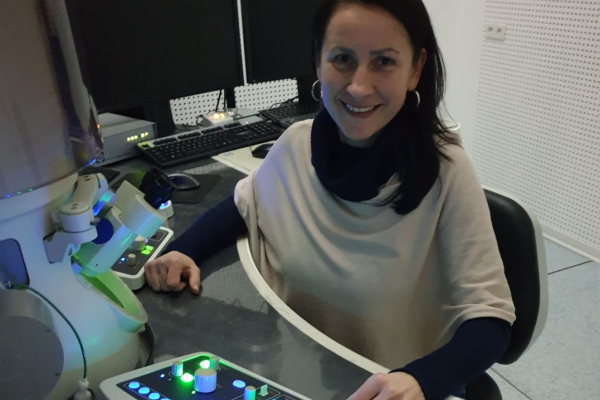ESTEEM3 interviews : Vesna Srot from Stuttgart Center for Electron Microscopy

Vesna SROT is a group leader at the Stuttgart Center for Electron Microscopy, MPI-FKF Stuttgart, Germany. In the ESTEEM3 project, she leads the Work Package 9 – Materials for Health. In this interview, Vesna SROT will explain her background, her role, and her views about ESTEEM3.
Question 1: Tell us something about yourself, your background, and your team.
I studied geology/mineralogy at the University of Ljubljana, Faculty for Natural Sciences and Engineering, Ljubljana, Slovenia. During my PhD thesis I was a young research fellow at the Jozef Stefan Institute, Ljubljana, Slovenia and there I started to work in the field of transmission electron microscopy (TEM). After obtaining my PhD in 2004, I spent one month at the FELMI institute in Graz, Austria and in December 2004 I started to work at the Max Planck Institute (MPI) in Stuttgart, Germany.
Question 2: Tell us briefly about the last original research you have conducted.
I have been involved in the field of biomineralization since over 10 years. Mainly, I have been working on human and rodent dental tissues. I have been characterizing these sensitive materials using advanced imaging and analytical electron microscopy techniques. Lately I have rediscovered my passion for TEM sample preparation. I developed several new protocols for the preparation of such sensitive organic/inorganic materials using focused ion beam (FIB). Currently I am preparing several publications on this topic.
In addition, I have been intensively working on the FIB sample preparation of clean samples for electrical-biasing in-situ experiments and on their characterization in the TEM. Just recently our manuscript with the title “Preparation of High-Quality Samples for MEMS-Based In-Situ (S)TEM Experiments” was published.
Question 3: Present your institute and its tasks within ESTEEM3?
The Stuttgart Center for Electron Microscopy (StEM) is a central scientific facility of the Max Planck Institute for Solid State Research (MPI-FKF) led by Prof. Peter A. van Aken who is also a coordinator of the ESTEEM3 project. We have an outstanding expertise in the wide range of sample preparation techniques and advanced materials characterization using state-of-the-art TEM´s.
Within ESTEEM3, the Stuttgart team is leading WP9 – Materials for Health and we are also contributing to other work packages. We have been intensively developing new sample preparation routines for materials for health and characterizing such samples in detail.
In addition, we hosted several transnational access (TA) guests that are working on materials for health. For example, the last project that I have been working on is dealing with dental pathologies. We could use our extensive expertise in this field to characterize materials of our guests.
Question 4: Why did you decide to be a part of the ESTEEM3 project?
ESTEEM3 project is a great opportunity to offer our knowledge and open our facilities to external users. We have started many successful collaborations that resulted in common publications.
I personally worked with several TA guests that do not have experience in electron microscopy but they are experts in their research field. Such collaborations greatly help both sides to learn from each other.
Question 5: What are the most challenging aspects of your role and how do you overcome them?
The biggest challenge was to receive results from all collaborating partners within the WP on time when reports or slides need to be prepared :-) I have been also missing a bit more collaboration between the partners. In the last few years, we had to be very creative since there were no possibilities for regular in person meetings. It is always easier to develop ideas when people meet and have possibility to discuss face to face.
Question 6: What is the added value of ESTEEM3 for the European research?
In my opinion, TA is one of the most successful parts of ESTEEM3 since it gives a unique possibility to broader research community and industry to get an access to state-of-the-art equipment coupled with advanced and skilled users.
Presence and advertisement of ESTEEM3 at the conferences and in social media is an elegant way to attract broader audience.
Question 7: What do you expect for the future of the project?
It would be very beneficial for the electron microscopy community to continue with such or similar projects in order to promote our work. I sincerely hope that EU will recognize the need and will further support our research efforts.
